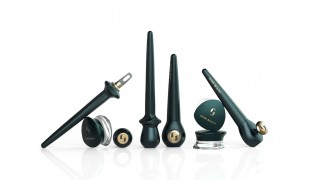- 5042
- 452
- 10
- 8
- 0
- Help Ukraine
About the solution
Having received very little care from his parents, Xinguang Li suffered from polio due to complications when he was 8 months old, having both of his legs paralyzed. Li has a happy family and has become the head of a R&D centre for disabled aiding devices.
By the end of 2015, Li learned how to drive at a special driving school and received his driver’s license. However, during the training, he strongly felt that the current driving assistance device for disabled people was not well designed. "People with disabilities can get the car moving but can’t easily control the car", said Li.
Xinguang Li was determined to develop a driving system that would really satisfy the needs of disabled people. He learned mechanical design and collected all the information of driving assistive systems in China and abroad. After numerous experiments, the draft was finished on March 2016 and, through many efforts he finally found a collaborator. With more debugs and improvements, the system “D-Run” was finally launched on august 2016.
With the “D-Run” system, disabled people are able to drive as freely as non-disabled people. The system also provides specific support for drivers with lower extremity absence, upper extremity weakness, upper limbs without fingers and right lower limb assistive devices, etc.
Li’s invention was experimented among disabled professionals and athletes and has received extremely positive comments. The “D-Run” was also granted 3 patents, and is already available on the market for 400-600 Euros, less than 10% the price of similar products. Meanwhile, Li and his research group have been consistently improving the “D-run”, and he also plans to design the boarding system for disabled people to get inside/ out of the car freely.
Adapted from: http://bit.ly/2FaBWmS
这些解决方案不应包括使用药物,化学品或生物制品(包括食品);创伤性设备;冒犯性的,商业或内在危险的内容。该解决方案未经医学验证。请谨慎进行!如果您有任何疑问,请咨询健康专家。
DISCLAIMER: This story was written by someone who is not the author of the solution, therefore please be advised that, although it was written with the utmost respect for the innovation and the innovator, there can be some incorrect statements. If you find any errors please contact the patient Innovation team via info@patient-innovation.com
-
-
248
-
0
-
2748

Collaborator James Leckey makes equipment to improve the quality of life and social inclusion of children with special needs
MOVING IN A WHEELCHAIR: Moving using a wheelchair.
BODY BALANCE: Maintaining body balance
STANDING UP: Standing up from a seated position
Playing
Neuromuscular Disorders
Assistive Daily Life Device (to help ADL)
Walking Aid (wheelchair/walker/crutches)
Assistive Technology access
5 Senses support devices: (glasses, hearing aids, headphones...)
Restoring mobility
Promoting self-management
Managing Neurological Disorders
Promoting inclusivity and social integration
Maintaining Balance and Mobility
Raise awareness
General and Family Medicine
Neurology
Orthopedics
Pediatrics
Physical Medicine and Rehabilitation
United States
-
-
-
718
-
0
-
9369

Former wheelchair user creates open source wheelchair
WALKING WITH A WALKING AID: Walking with a walking aid
Post-Polio Syndrome
Muscular Dystrophy
Neuromuscular Disorders
Cerebral Palsy
Cervical spinal cord injury/Tetraplegia
Walking Aid (wheelchair/walker/crutches)
Assistive Daily Life Device (to help ADL)
Muscle cramps or spasms
Difficulty coordinating movements
Stiffness or rigidity (difficulty moving)
Paralysis of the legs and lower body
Muscle weakness
Restoring mobility
Promoting self-management
Managing Neurological Disorders
Maintaining Balance and Mobility
Preventing (Vaccination, Protection, Falls, Research/Mapping)
General and Family Medicine
Infectious Diseases
Medical Genetics
Neurology
Orthopedics
Public Health
Kenya
-
-
-
336
-
0
-
3768

GUIDE beauty ,developed by a parkinson's patient with the help of a MS patient, is revolutionising accessible makeup
Grip
CAREGIVING
Parkinson's Disease
Assistive Technology access
Assistive Daily Life Device (to help ADL)
Tremors
Trouble with fine motor skills (e.g., writing, buttoning clothes)
Restoring mobility
Promoting self-management
Managing Neurological Disorders
Preventing (Vaccination, Protection, Falls, Research/Mapping)
Raise awareness
General and Family Medicine
Internal Medicine
Neurology
Physical Medicine and Rehabilitation
United States
-
 zh
zh